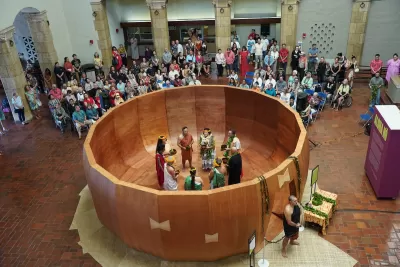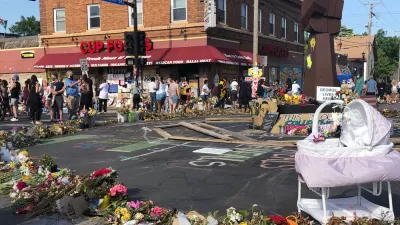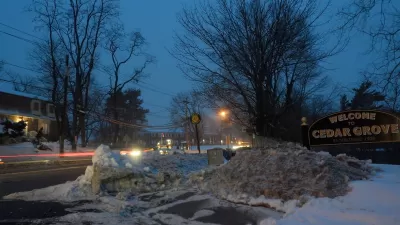The towering ʻUmeke Lāʻau installation by Native Hawaiian artist Meleanna Aluli Meyer, unveiled at Honolulu's city hall, is a powerful symbol of cultural resilience and healing.

A historic new art installation, ʻUmeke Lāʻau (Culture Medicine) by Native Hawaiian artist Meleanna Aluli Meyer, has been unveiled at Honolulu Hale (city hall) as part of Hawaiʻi Triennial 2025: Aloha Nō (HT25). Unlike traditional ʻumeke (calabashes) that are small vessels for food, water, and sacred offerings, this towering 22-foot-wide, 8-foot-tall wooden structure reimagines the form as a symbol of healing, reflection, and societal repair. Created in collaboration with Honolulu Community College carpentry students and the University of Hawaiʻi at Mānoa’s art and theatre programs, the immersive installation invites visitors to step inside, remove their shoes, and reflect on themes of culture, history, and transformation.
More than just an art piece, ʻUmeke Lāʻau serves as a tribute to the Native Hawaiians and Hawaiʻi citizens who opposed the U.S. annexation of Hawaiʻi in 1897. Built-in speakers within the structure play the names of over 38,000 individuals who signed the Kūʻē Petitions, including Meleanna’s grandfather, Noa Webster Aluli. The recordings, voiced by UH Mānoa Hawaiian Theatre faculty and students, ensure that these historical figures are remembered and honored. According to Tammy Hailiʻōpua Baker, founder of the Hawaiian theatre program, the experience of reading ancestral names into the microphone was deeply moving and reinforced the personal and collective significance of the installation.
The project was made possible through the efforts of many hands, including UH Mānoa artist-in-residence Meleanna Aluli Meyer, Honolulu CC carpentry students, and local artists such as newly appointed UH Mānoa assistant professor Kaʻili Chun. Described as an artwork that “feeds” not just physically but spiritually and culturally, ʻUmeke Lāʻau offers a rare immersive experience where visitors can engage with its meaning firsthand. The installation will be on display at Honolulu Hale through May 4 before traveling to other locations, ensuring its message of resilience and healing reaches broader audiences.
FULL STORY: Historic Native Hawaiian art unveiled at Honolulu Hale

Alabama: Trump Terminates Settlements for Black Communities Harmed By Raw Sewage
Trump deemed the landmark civil rights agreement “illegal DEI and environmental justice policy.”

Planetizen Federal Action Tracker
A weekly monitor of how Trump’s orders and actions are impacting planners and planning in America.

Why Should We Subsidize Public Transportation?
Many public transit agencies face financial stress due to rising costs, declining fare revenue, and declining subsidies. Transit advocates must provide a strong business case for increasing public transit funding.

Understanding Road Diets
An explainer from Momentum highlights the advantages of reducing vehicle lanes in favor of more bike, transit, and pedestrian infrastructure.

New California Law Regulates Warehouse Pollution
A new law tightens building and emissions regulations for large distribution warehouses to mitigate air pollution and traffic in surrounding communities.

Phoenix Announces Opening Date for Light Rail Extension
The South Central extension will connect South Phoenix to downtown and other major hubs starting on June 7.
Urban Design for Planners 1: Software Tools
This six-course series explores essential urban design concepts using open source software and equips planners with the tools they need to participate fully in the urban design process.
Planning for Universal Design
Learn the tools for implementing Universal Design in planning regulations.
Caltrans
Smith Gee Studio
Institute for Housing and Urban Development Studies (IHS)
City of Grandview
Harvard GSD Executive Education
Toledo-Lucas County Plan Commissions
Salt Lake City
NYU Wagner Graduate School of Public Service





























